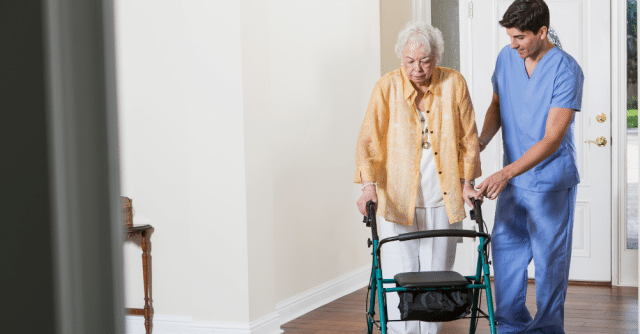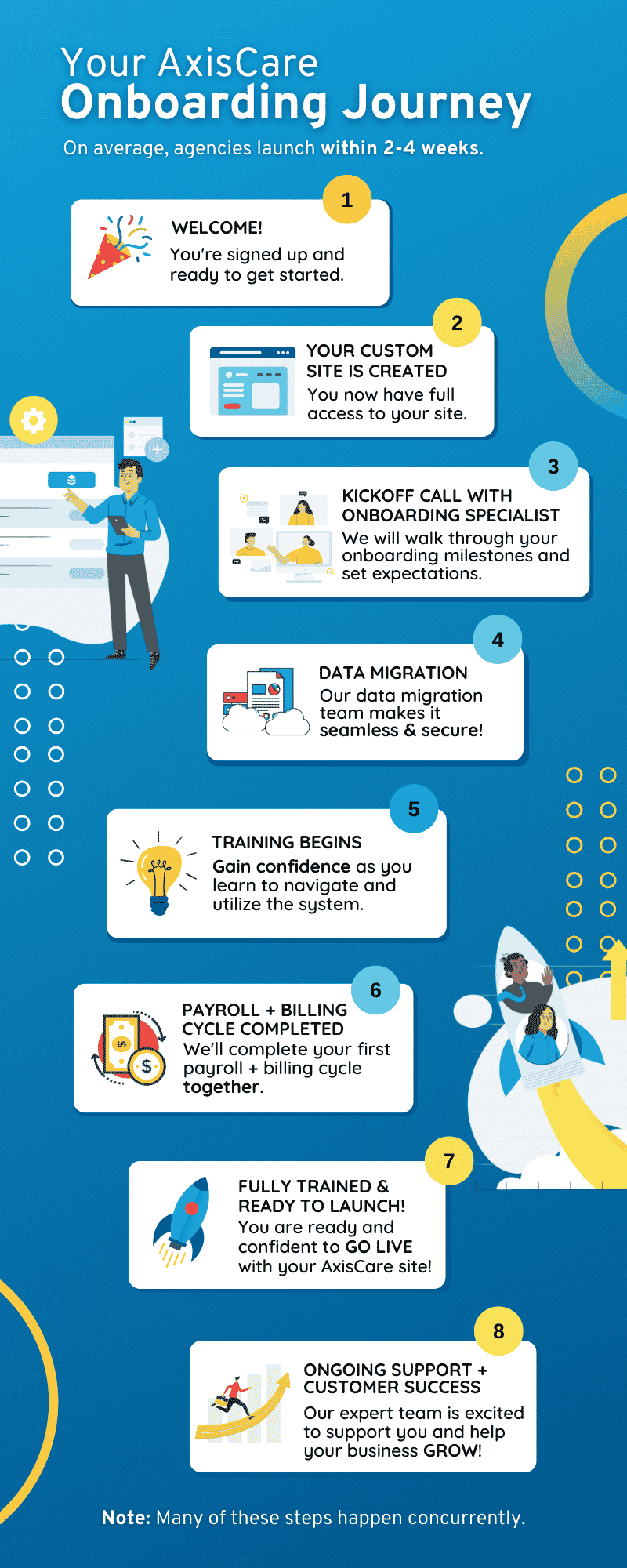The home care industry is currently experiencing unprecedented growth, with no sign of slowing down. By 2025, 10-25% of care services delivered in hospitals, clinics, and similar facilities are projected to occur at home, with the population across the United States aging at a rapid pace.
As demand soars, home care agencies will need to rethink their operational workflows to accommodate the influx. More scheduling complexities, a greater need for personalization, complex billing processes associated with various payers, and more. This piece will cover the challenges faced by home care agencies as they explore this new frontier and how home health care software fits into a successful strategy.
Operational Efficiency: The Secret Weapon for Home Care Agency Success
Think of operational efficiency as engine oil. Just like oil keeps a vehicle’s internal mechanisms running smoothly, operational efficiency ensures home care agencies can function at their peak. Without it, processes become sluggish, resources are wasted, and the overall system is at risk of breakdown, compromising the quality of care and satisfaction on behalf of both clients and caregivers.
6 Best Practices for Operational Excellence
Operational excellence is achieved through a mosaic of different efforts, each one working to help the organization run more smoothly. These six pillars are key home care trends that provide a comprehensive roadmap for agencies to evaluate their workflows and identify gaps.
1. Streamlining Scheduling & Staffing
According to a third-party survey commissioned by AxisCare, 46% of respondents agreed that scheduling is a critical system to master for optimal operational efficiency. Agencies should be quick on their feet and able to accommodate last-minute changes on both the caregiver and client sides. Efficient scheduling also optimizes caregiver workloads to help prevent burnout and turnover, both of which can hurt an agency’s profitability and stability.
2. Employee Training & Development
Diversification is key to building a stable and change-resistant service offering. By providing training and development opportunities for employees, agencies can upskill their team in specialized areas of expertise, enabling them to accommodate a broader range of patient needs. Training can also bring caregivers up to speed on best practices for their current skill set, enhancing the overall quality of service provided.
3. Client Communication & Engagement
Communicating with patients is much more challenging in a remote care environment, where there is no on-call nurse or specialist to answer questions or perform routine checks. Remote patient monitoring bridges this gap using technology, sensors, and other devices to deliver real-time information to healthcare practitioners. Mobile apps and client portals also work to establish clearer communication channels, allowing patients to feel more involved and up-to-date with their progress and condition.
4. Compliance & Regulation Adherence
Agencies must comply with legal and ethical standards to avoid costly penalties and legal issues, including HIPAA safeguards, a fundamental pillar of data security that protects against data breaches and preserves patient privacy. Regularly conducting security audits and updating protocols to comply with evolving regulations can help agencies avoid disruptions and maintain continuous, high-quality service delivery.
5. Data Management and Analysis
Business intelligence tools enable home care agencies to collect insights that drive better decision-making and resource allocation. These tools monitor the financial and operational health of a given agency: over time, they can track trends and provide recommendations to better manage essential factors like turnover, lead generation, hours billed, and revenue.
6. Continuous Quality Improvement
The only way to truly understand whether the above efforts are working is to continuously audit your agency’s performance and systems. Closely follow key metrics at regular intervals to identify which improvements are making a difference and which ones require more input.
The Role of Technology in Home Care Operations
The primary role of technology is to make systems more efficient, and this is most certainly the case in the world of home healthcare. One of the most significant hurdles to operational efficiency is time wasted on routine tasks, many of which can be automated with a tailor-made home care software solution.
- Billing clients manually consumes large quantities of bandwidth on behalf of administrators. Printing and mailing invoices, processing cheques, and following up manually can account for hours of work every week. Automated billing solutions send invoices straight to clients’ inboxes, enable instant electronic payments, and make it easy to track outstanding amounts, no matter how many payer sources you’re juggling.
- Scheduling caregivers is also made easier with automation, giving agencies greater flexibility to accommodate unexpected changes. Administrators can use home care software for intelligent matchmaking, filling open shifts quickly, and routing optimization, all while reducing the risk of human error.
- Communication between each party always works best when there’s a single hub tying it all together. Home care software replaces email, text, and other siloed channels in favor of embedded two-way chat, facilitating real-time updates, seamless information sharing, schedule coordination, and problem resolution.
Streamline Your Operations
As the demand for home care continues to rise, agencies must adapt their operational strategies to meet the complex road ahead. From staff training to regulatory compliance and data management, embracing technology can significantly enhance these pillars by automating routine tasks and uniting disparate stakeholders in a single digital universe.
Ready to start exploring what home care software can do for your business? Request a live demo with the AxisCare team.









